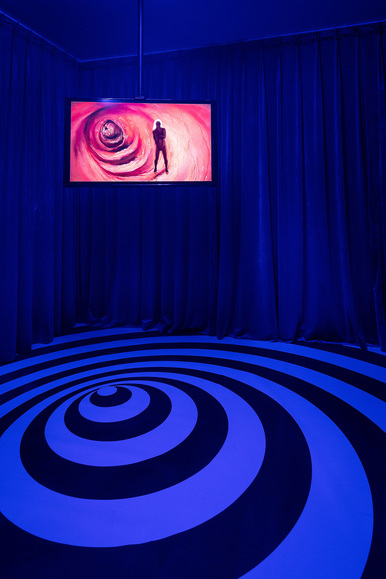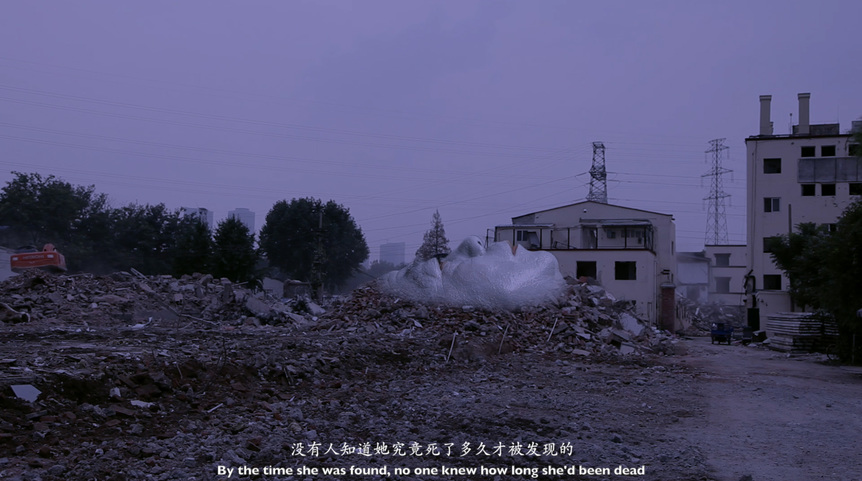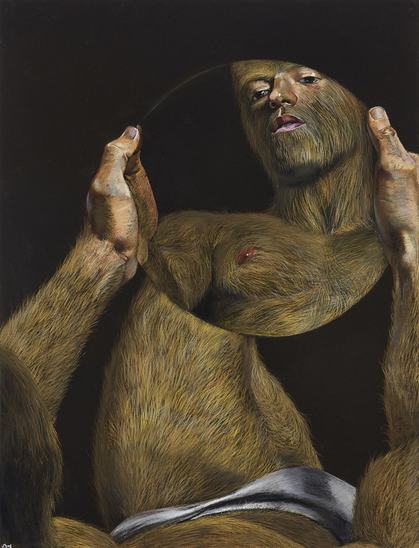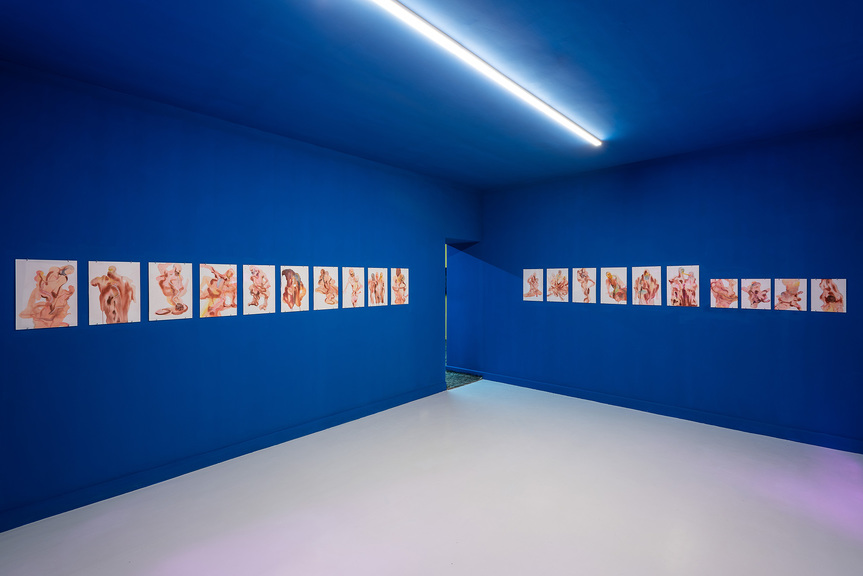-
From Current Issue
-
- Editor’s Letter Fire in the Heart
- Reviews I Gusti Ayu Kadek Murniasih
- Reviews 11th Seoul Mediacity Biennale: “One Escape at a Time”
- Dispatch Networked China
- One on One Monira Al Qadiri on Yukio Mishima
- Essays The rise of independent art spaces in pandemic-era Shanghai
- Features Tuan Andrew Nguyen
- Table of Contents
- Web Exclusives
- Archive
- Subscribe

R
E
V N
E
X
T
Installation view of WANG HAIYANG’s solo exhibition at Capsule Shanghai. All images courtesy the artist and Capsule Shanghai.
Among the slew of exhibitions that opened in November during Shanghai Art Week—anchored by the unveiling of the 2018 Shanghai Biennale, and commercial fairs Art021 and West Bund Art and Design—Wang Haiyang’s solo presentation at Capsule Gallery stood out for its bravery. The gallery consistently pushes against conservative boundaries, dramatically altering the physical characteristics of its space every other month for shows of both local and international emerging artists who are little discussed. For his exhibition, Wang took over the platform with a series of intimate and sensual watercolors, pastels and video works tackling sex, death and hybridity.
Entering the gallery through a lush blue velvet curtain, which enclosed the interior perimeter of the room, one was immediately immersed in a Lynchian space lit in an Yves Klein blue—both an art historical reference and a personal signature as the artist’s name, Haiyang, means ocean—with a spiraling black-and-white floor design. Suspended in one corner was a video work, Party in the Anus (2018). Party features an androgynous figure dressed in a shiny, brown body suit, blonde wig and red heels, performing a celebratory dance against the backdrop of the inside of an anus. No deeper reading need be employed, or seems possible. The work is comical, surreal and irreverent.
Another video, The City of Dionysus (2018), tells the story of an elderly woman who lay dead in her apartment for days before her decayed body was discovered. The narrative, based on an account Wang heard as a child, is juxtaposed with images of his Beijing studio being demolished and animated segments of sexually charged drawings depicting amorphous hybrid couplings. By interweaving scenes of carnal abandon with that of destruction, the work prompts ruminations on the futility of rutting before rotting.
In the adjacent galleries were Wang’s most conceptually and visually arresting works. Skins 01 – 06 (2017–18) is a sublimely beautiful series of pastel drawings featuring semi-imaginary portraits of lycanthropic people, or werewolves. Paintings of figures with hypertrichosis, the genetic condition that causes abnormal hair growth on the face and body, were particularly fashionable in Europe during the 16th century, with famous early examples including Lavinia Fontana’s Portrait of Antonietta Gonzales (1595) and Jusepe de Ribera’s La Mujer Barbuda (or, The Bearded Woman, 1631). Wang’s depictions of people with this disorder are combined with references to more recent masterpieces. For example, the image of a wolfman examining his hidden genital area with a mirror acts as a stunningly evocative gender reversal of Gustave Courbet’s L’Origine du Monde (1866), while in another drawing, an interpretation of René Magritte’s The Lovers (1928) appears. Though these referential gestures seem playful, there is also a dark tone to the portraits, specifically in Wang’s coupling of historical fetishizations of the freakish with homosexual activity, hermaphroditism and a sense of oppression—the hooded, Magrittian figure, for instance, could be read as a victim of torture or conversion therapy—implying a link between the horrified fascination of the Victorians with today’s polarized, political discourse around LBGITQ rights.
Accompanying these works was the short video, Skins (2018), featuring a worm-like creature emerging from a pocket of fur and crawling off-screen, like a marsupial creature blindly groping for its parent’s pouch. As with much of Wang’s work, there is humor, both intriguing and repulsive, arising from a sense of futility.
In the final room, Wang had a selection of 23 watercolors, each Untitled (2018), from the animated sections of The City of Dionysus. They appear to be whimsical, fleshy abstract paintings. However, viewed closely, detailed human forms emerge. Heads, resembling Greek philosophers, hover within and around amorphous, metamorphosing bodies and languid genitals merge with chunks of flesh, reminiscent of scenes from John Carpenter’s The Thing (1982), or the more recent orgiastic alien couplings of Amat Escalante’s The Untamed (originally titled La Región Salvaje, 2016).
That Wang’s practice has shifted recently from large paintings to smaller pastels and watercolors is unsurprising, given that Wang had spent the past year enduring surgical operations that left him largely incapacitated. This experience also informed Wang’s preoccupation with body horror, gender identity and sex, which featured throughout the show. Exploring Wang’s work was akin to taking a darkly comic, engaging journey through existential autobiography.
Wang Haiyang’s solo exhibition is on view at Capsule Gallery, Shanghai, until December 25, 2018.
To read more of ArtAsiaPacific’s articles, visit our Digital Library.


















